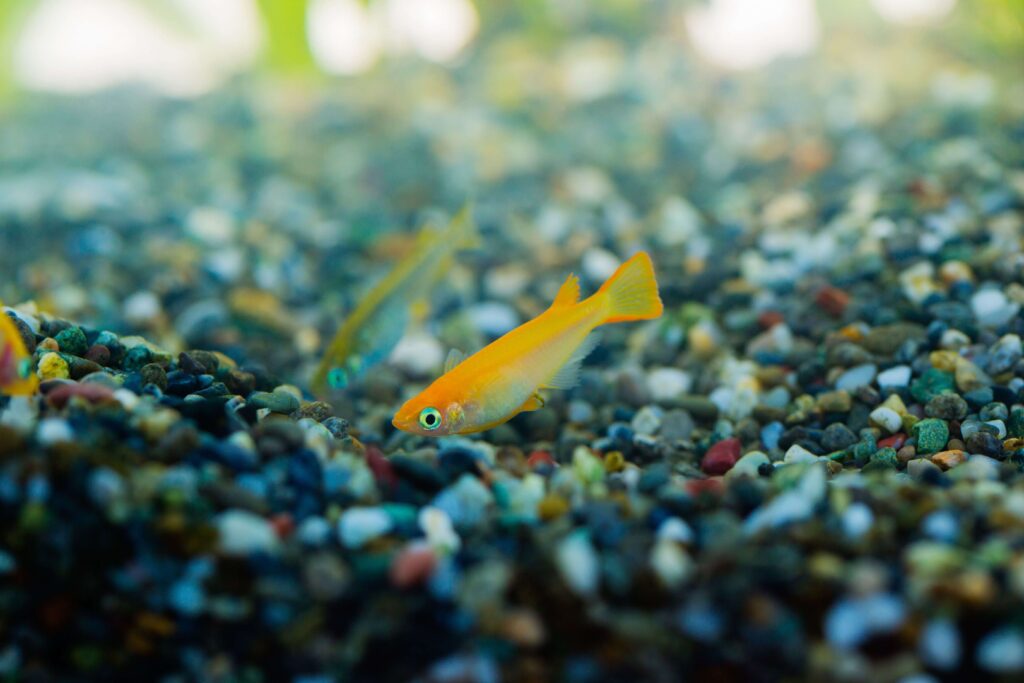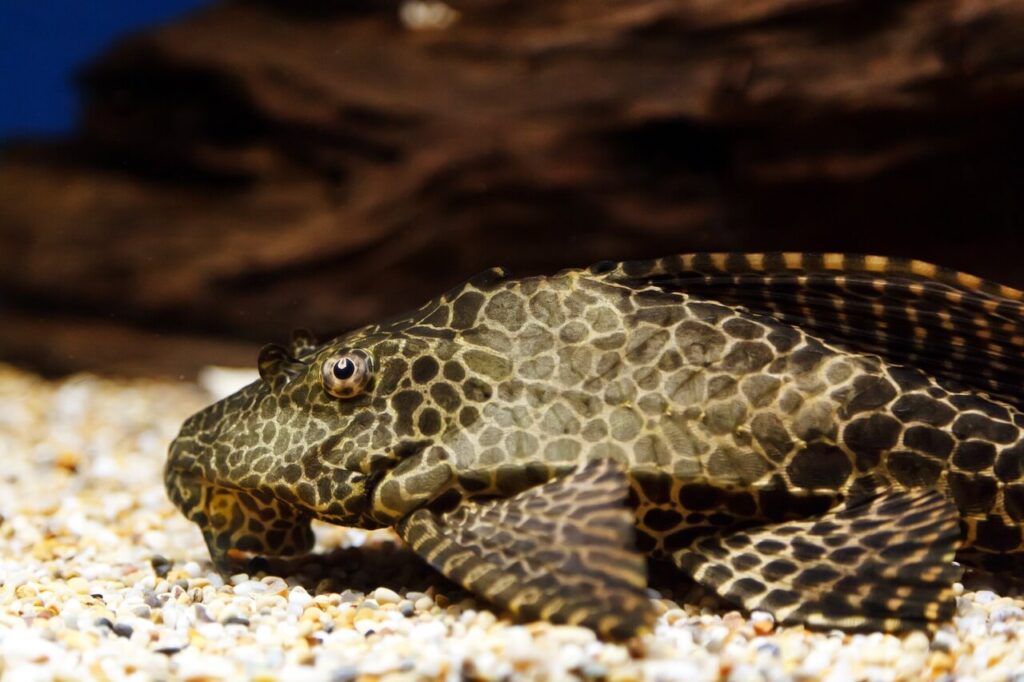When it comes to setting up a Tetra fish tank, one crucial decision you’ll face is choosing the right substrate. The substrate not only enhances the aesthetic appeal of your aquarium but also plays a significant role in the overall well-being of your Tetra fish. In this comprehensive guide, we’ll delve into the world of Tetra fish tank substrate choices, exploring the different options, their pros and cons, and providing expert advice to help you make an informed decision.
Understanding the Importance of Substrate
Before we dive into the various substrate choices, it’s essential to understand why substrate matters in a Tetra fish tank. Substrate serves multiple purposes in your aquarium, including:
- Aesthetic Enhancement: Substrate can greatly enhance the visual appeal of your Tetra tank. It comes in various colors and textures, allowing you to create a natural or artistic underwater landscape.
- Biological Filtration: Substrate serves as a home for beneficial bacteria that help break down waste and maintain water quality. These bacteria convert harmful ammonia into less toxic substances, ensuring a healthy environment for your Tetras.
- Rooted Plants: If you plan to keep live plants in your Tetra tank, a suitable substrate is crucial for their growth. Plants anchor themselves in the substrate and absorb nutrients from it.
- Behavioral Enrichment: Many Tetra species are foragers, and a suitable substrate provides them with a natural environment for foraging and exploring.
Now that we understand the significance of substrate let’s explore the different options available for your Tetra fish tank.

Types of Substrate for Tetra Fish Tanks
1. Gravel
Gravel is perhaps the most common choice for Tetra fish tank substrates. It comes in various sizes and colors, allowing you to customize the look of your aquarium. Here’s what you need to know about using gravel as substrate:
- Pros:
- Provides a stable surface for plant roots.
- Facilitates the growth of beneficial bacteria.
- Easy to clean and maintain.
- Tetras enjoy foraging in gravel.
- Cons:
- Debris may accumulate between gravel particles if not cleaned regularly.
- Some Tetra species with delicate fins might get injured on sharp gravel edges.
2. Sand
Sand is another popular choice among Tetra fish keepers, particularly for species that prefer a soft substrate. Here are the key points to consider when using sand as substrate:
- Pros:
- Soft and gentle on Tetra fins.
- Ideal for species like Corydoras that sift through the substrate.
- Aesthetic options include various colors.
- Supports plant growth, especially for root feeders.
- Cons:
- Requires more thorough cleaning to prevent debris buildup.
- Some sand types can compact over time, limiting water circulation.
3. Aquarium Soil
Aquarium soil or plant-specific substrate is designed explicitly for planted tanks. It provides an enriched environment for aquatic plants and offers several advantages:
- Pros:
- Rich in nutrients, promoting lush plant growth.
- Aids in maintaining stable water parameters.
- Supports the growth of beneficial bacteria.
- Enhances the overall appearance of the tank.
- Cons:
- Can be expensive compared to other substrates.
- Some varieties may initially cloud the water when introduced.
4. Crushed Coral
Crushed coral is a substrate choice that raises the pH and hardness of the water, making it suitable for Tetra species that thrive in slightly alkaline conditions. Here are the key considerations:
- Pros:
- Helps maintain stable pH levels.
- Suitable for Tetras like the Lemon Tetra and Bloodfin Tetra that prefer harder water.
- Promotes beneficial bacteria growth.
- Cons:
- Not suitable for Tetras that require softer water conditions.
- Limited aesthetic customization compared to gravel or sand.
5. Bare Bottom
In contrast to the traditional substrate choices, some Tetra enthusiasts opt for a bare-bottom tank. While it may seem unconventional, this approach has its merits:
- Pros:
- Easier to clean and maintain.
- No substrate means no debris buildup.
- Ideal for breeding setups where cleanliness is crucial.
- Cons:
- Lacks the aesthetic appeal of a substrate.
- Provides limited opportunities for planting live aquatic plants.
The 5 Best Substrate Options For Your Tetra Fish Tank
| Substrate Type | Pros | Cons |
|---|---|---|
| Gravel | – Stable for plant roots | – Debris buildup if not cleaned regularly |
| – Supports beneficial bacteria growth | – Potential risk to delicate-finned Tetras | |
| – Easy to clean and maintain | ||
| – Great for foraging Tetras | ||
| Sand | – Gentle on Tetra fins | – Requires thorough cleaning to prevent debris buildup |
| – Ideal for species that sift through substrate | – Some sands can compact over time, limiting circulation | |
| – Aesthetic options | ||
| – Supports plant growth | ||
| Aquarium Soil | – Rich in nutrients for plant growth | – Initial cloudiness possible with some varieties |
| – Stable water parameters | – Can be expensive compared to other substrates | |
| – Promotes beneficial bacteria growth | ||
| – Enhances tank appearance | ||
| Crushed Coral | – Maintains stable pH and hardness | – Not suitable for Tetras requiring softer water |
| – Suitable for specific Tetra species | – Limited aesthetic customization compared to others | |
| – Supports beneficial bacteria growth | ||
| Bare Bottom | – Easy to clean and maintain | – Lacks aesthetic appeal |
| – No substrate means no debris buildup | – Limited opportunities for live plant cultivation | |
| – Ideal for breeding setups |
Keep these considerations in mind when selecting the right substrate for your Tetra fish tank, ensuring it aligns with your Tetra species’ needs and your overall tank goals.
Choosing the Right Substrate for Your Tetra Tank
Now that we’ve explored the various substrate options available, how do you go about selecting the one that’s best for your Tetra fish tank? Here are some expert tips to help you make an informed decision:
Consider Your Tetra Species
Different Tetra species have varying substrate preferences. Some thrive in sandy bottoms, while others prefer gravel or even bare bottoms. Research the specific requirements of the Tetra species you plan to keep and choose a substrate that aligns with their needs.
Balance Aesthetics and Functionality
While it’s tempting to prioritize aesthetics, don’t forget about the practical aspects. Consider how easy it will be to maintain the substrate and whether it supports the growth of beneficial bacteria and aquatic plants.
Think About Water Chemistry
Some substrates, like crushed coral, can significantly impact the pH and hardness of your aquarium water. Ensure that your substrate choice aligns with the water parameters your Tetras require for optimal health.
Plan for Plant Growth
If you intend to have live plants in your Tetra tank, opt for a substrate that provides adequate nutrients for plant roots. Aquarium soil or plant-specific substrates are excellent choices in this case.
Compatibility with Tank Mates
Consider the other fish and tank mates you plan to keep with your Tetras. Ensure that the substrate choice is suitable for the entire community, taking into account their specific needs and preferences.
Maintenance and Cleaning
No matter which substrate you choose, proper maintenance is essential to keep your Tetra tank clean and healthy. Here are some key maintenance tips:
- Regular Vacuuming: For substrates like gravel or sand, use a gravel vacuum to remove debris and detritus that can accumulate over time. Aim to perform partial water changes and vacuuming every two to four weeks, depending on your tank’s size and bioload.
- Avoid Disturbance: When cleaning, be gentle to avoid disturbing the substrate too much, as this can release trapped gases and debris.
- Test Water Parameters: Monitor and test your tank’s water parameters regularly to ensure they remain within the desired range for your Tetra species.
- Substrate Replacement: Over time, substrates can become compacted or lose their nutrient value. Consider replacing or replenishing the substrate every few years, especially in planted tanks.
Conclusion
In the world of Tetra fish keeping, selecting the right substrate for your aquarium is a crucial decision that can impact the health and happiness of your fish. By considering the needs of your Tetra species, balancing aesthetics with functionality, and understanding the impact on water chemistry, you can make an informed choice.
Remember that there is no one-size-fits-all answer when it comes to Tetra fish tank substrates. Each option has its advantages and drawbacks, so choose the one that aligns with your goals and the specific requirements of your Tetra community. With proper care and maintenance, your Tetras will thrive in their well-appointed substrate environment, delighting both you and any admirers of your beautiful aquarium.
So, whether you opt for the classic charm of gravel, the softness of sand, the richness of aquarium soil, the alkalinity of crushed coral, or the minimalism of a bare-bottom setup, your Tetras are sure to appreciate your thoughtful substrate choice. Happy fish keeping!











